In order to engage older consumers effectively and minimise campaign wastage, it’s important to be mindful of a range of factors
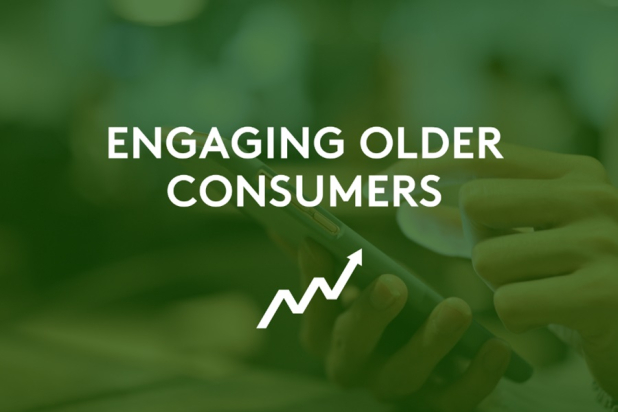
Older consumers are often lauded by marketers as a cohort ripe for targeting, on account of being particularly likely to have considerable disposable income compared to their younger counterparts.
However, age – for all its uses as an indicator of so many preferences and behaviours – can be a very blunt instrument for targeting. In order to engage older consumers effectively and minimise campaign wastage it is important to be mindful of a range of factors, which we explore below.
Media: Avoid assumptions about media consumption
As a proportion of their overall numbers, those aged 55+ are considerably less likely than younger adults to use the TikTok app. However, in terms of total numbers, there are more consumers aged 55+ using TikTok than there are aged 15-24 or 25-34.
It is thus important to avoid making assumptions about certain media platforms being used almost exclusively by young people – when the reality is far more nuanced – and instead relying on what the hard data shows us.
TikTok app: % using vs overall numbers
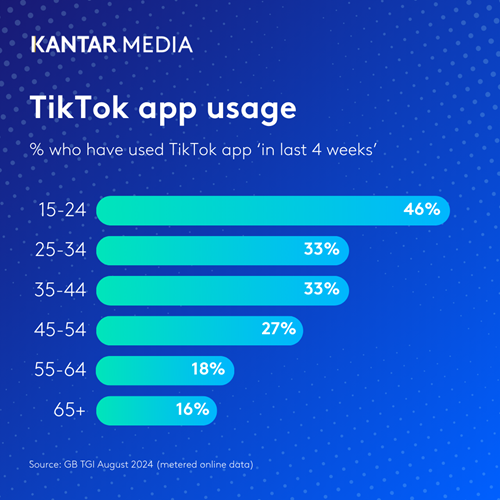
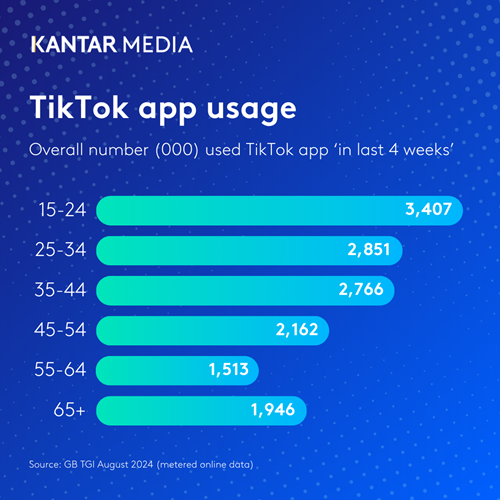
Life stage: Well under half of over-55s are ‘Empty Nesters’ and thus life priorities for this group are very mixed
It is easy to make assumptions about what kind of life stage older adults are in. Married with grown up children who have left home might be assumed applicable to many, if not most of them. However, a look at TGI’s Lifestage classification reveals a far more nuanced reality.
Whilst the ‘Empty Nesters’ TGI lifestage (married/living with partner and do not live with children) accounts for the largest single share of over-55s, the majority of them are not in this position, with significant minorities who never had children (e.g. Childfree Senior Couples) or who live alone (e.g. Senior Sole Decision Makers). Similarly, almost a million of them still have children of school age.
Age and where someone is in their life cycle are two different things. Marketers need to be mindful that a one-size-fits-all approach to older consumers is likely to prove very inefficient. It is important to tailor campaigns to consumers with an understanding of their life stage and what this means for their needs, values and priorities.
Over-55s can be found in multiple life stages
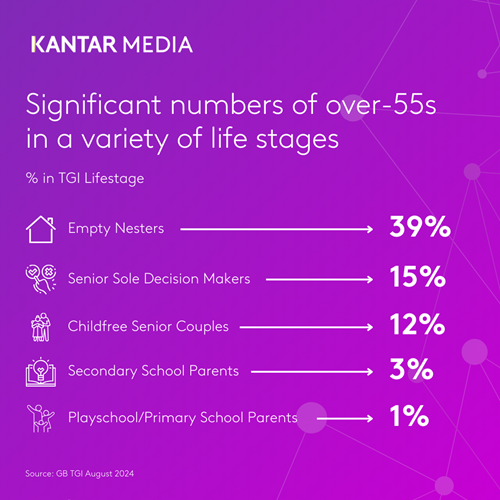
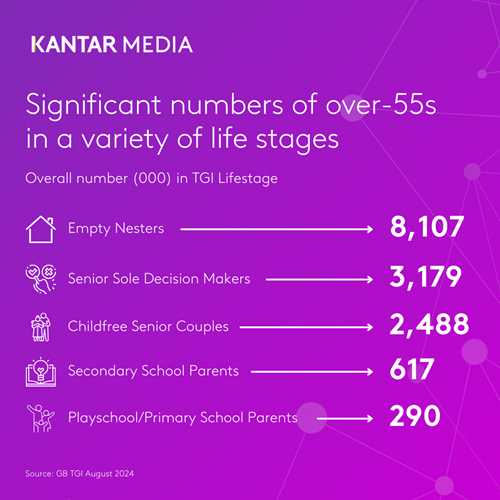
Financial comfort: Avoid age as a proxy for likelihood of disposable income
An oft-cited attraction of targeting older consumers is that they are particularly likely to have considerably more disposable income than the average adult. Whilst there is some truth in this, the reality is more nuanced and reaching the more comfortably-off older consumers efficiently entails more than simply targeting by age.
As we have just seen, older consumers are spread across a variety of life stages, each of which brings its own financial pressures and releases. Fluctuating life cycles and circumstances can have a big impact on financial situation.
For example, TGI shows that those aged 55+ who own their own home outright are 83% more likely than the average adult to say they are comfortable on their present income, whilst those who are aged 55+ and either have a mortgage or are paying rent are considerably less likely than the average adult to claim to be comfortable on their current income – and this is not a small group, comprising of well over a million over-55s.
Thus, age has a part to play as an indicator of financial comfort and potential to spend, however on its own it is a very blunt instrument and for efficient targeting should be combined with other more directly financial metrics.
Financial comfort and home ownership
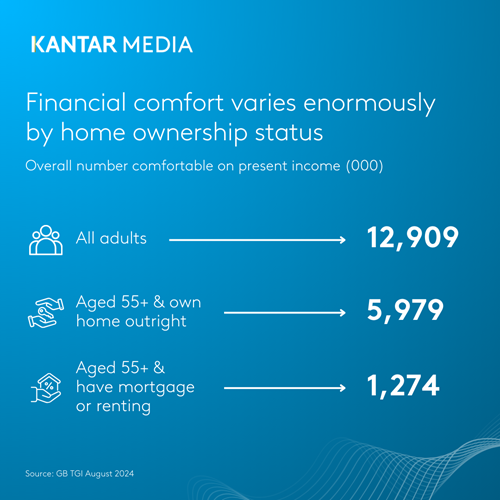
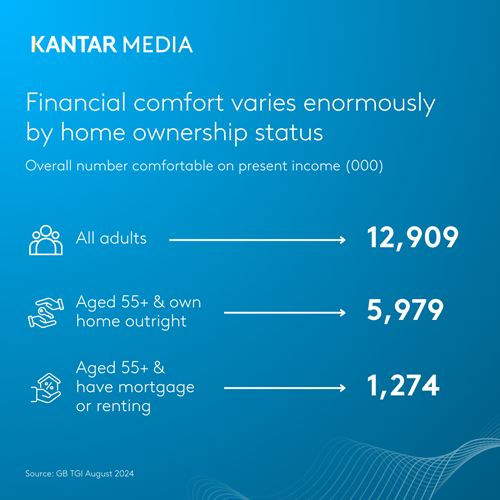
Media industry increasingly wary of over-reliance on age in targeting and profiling
Treading carefully when it comes to targeting and profiling around age is something which key players across the media industry are increasingly cognizant. Accord Marketing are one agency taking a rigorous approach to audience targeting designed to sidestep the pitfalls inherent in using age alone.
Accord Marketing’s Jasman Ahmad, Strategy Director, and Alex Donoyou, Senior Client Director, comment: “This TGI Stories article highlights a very important fact: the over-55 audience cannot be boxed into a simplistic age-based stereotype. While it’s tempting to rely on age as a proxy for disposable income or media habits, this approach is outdated and often counterproductive, as today’s older consumers are more diverse than ever, spanning various life stages and financial situations.
“As marketing experts, we believe it’s time to move beyond age-centric targeting and embrace a strategy rooted in reality. A more refined segmentation approach is needed, and at Accord we try to move ‘beyond age’ and look at older audiences with the same sophistication as applied to younger demographics, by understanding their unique motivations, behaviours, life stage, financial metrics, and media usage patterns. This approach can drive more effective and meaningful connections with a cohort that is far too valuable to ignore.”
Find out more
You can discover more about avoiding bias in consumer profiling and targeting with our ‘Beyond Bias’ report.
To find out more about the ways in which Accord Marketing are moving beyond age and other bias in marketing campaigns, please get in touch with [email protected].